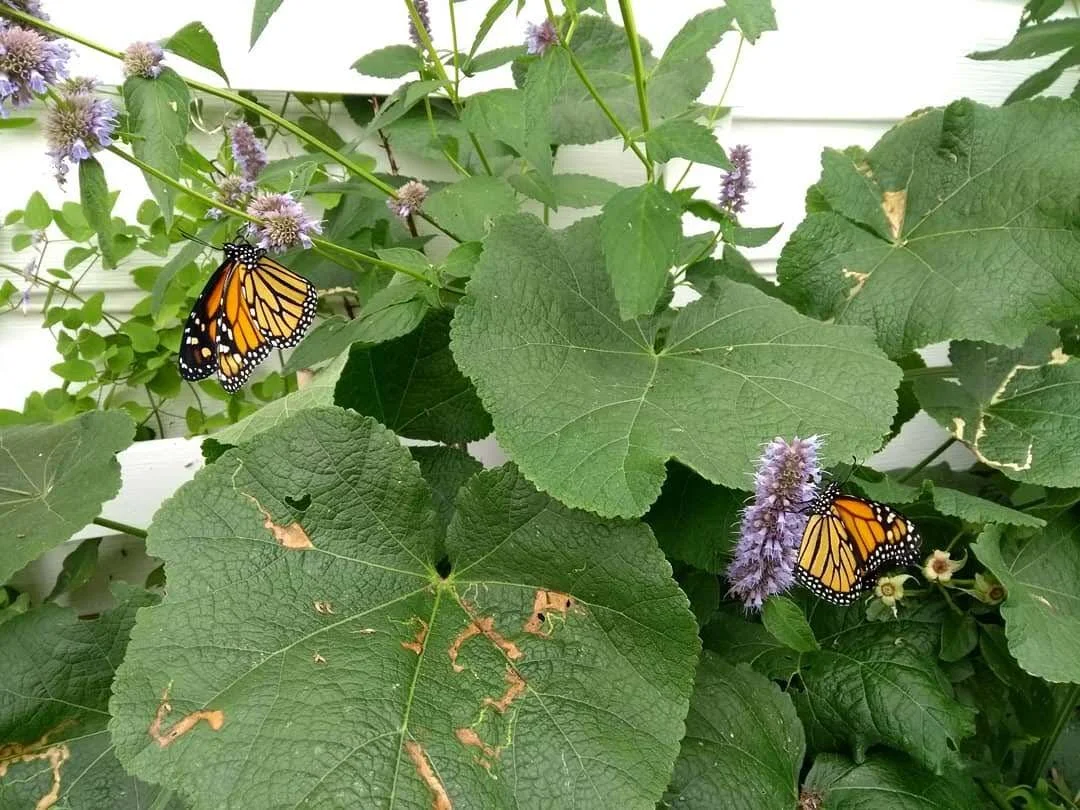The Catterpiller Garden
Here we are, the last week of February.
The peppers are coming along beautifully. Between the seed heating mat and the grow lights they are weeks ahead of last year’s poor crop of seedlings. If you keep your house cooler in the winter than most, these will save your heat-loving starts.
I’m thinking that I’ll be potting up the Brazilian Starfish and most of the other pepper varieties this week on Thursday, when I plant the 4th installment of the Pepper Project: Planting.
Brazilian Starfish Peppers on the right, the first week of Pepper Project peppers in the middle and then the second week just starting to pop.
After potting up I’ll start bimonthly fertilizing. I didn’t use fertilizer last year, silly me, but after the thought-smack of - how do I expect them to grow well if I don’t actually feed them - I will change my ways. I’m not sure what fertilizer I’m going to use just yet. More research to be done.
For everything else potager wise I have to wait until March 1.
On the roundabout subject of pollinators leading me to butterflies, I read an interesting article last week, thanks to Kate Harries mentioning it on her blog Return of the Native.
Monarchs on Anise Hyssop in the front garden
Study: Few keystone plant genera support the majority of Lepidoptera species
We’ve spoken about supporting pollinators and songbirds before. It is a valuable and fulfilling goal to have. This study takes a very interesting approach. When we see a songbird or a butterfly we see the middle or end of a process, not the beginning.
What went into producing both of those creatures?
“Caterpillars transfer more energy from plants to other animals than all other herbivores combined.”
“A single pair of breeding chickadees must find 6,000 to 9,000 caterpillars to rear one clutch of young, according to Doug Tallamy, a professor of entomology and wildlife ecology at the University of Delaware.”
Worried about songbirds? Interested in planting a really useful, diverse ecosystem on your property? Want to support the butterflies and moths that produce these caterpillars?
You can.
Caterpillars are mandibulate (chewing) insects. This means that they have developed specialized adaptations to the “taste” of certain plants. Once they get a taste for this plant they search it out in order to lay their eggs on something they know will support their babies.
We all know the connection of Monarch butterflies to Milkweed.
Certain invasives that look like milkweed confuse the Monarch. They lay their eggs on them but when the caterpillars hatch there is no food for them so they cannot complete their life cycle.
Also, well intentioned people have been planting Tropical Milkweed (I got 2 packets of seed in the seed swap) which can confuse the Monarch even more, making it believe it has reached it’s mating ground so that they lay eggs during the winter in the Southern States but the caterpillars cannot survive. It has been found that Monarchs that don’t migrate are more likely to be infected by the protozoan Ophryocystis elektroscirrha (OE). This causes smaller body size, wing deformities, reduced flight performance, and shorter adult lifespans.
Unfortunately there is less milkweed, their actual food, in farmer’s fields because Common Milkweed is classified as “noxious” under Ontario’s Weed Control act, as I spoke about in a previous post. Pesticides applied to agricultural land to remove the milkweed have created huge loss in habitat and a novel, monoculture ecosystem. This does not support life!
Keystone Species Support Life
There are over 100 varieties of milkweed. But not all are created equal. And they’re not ever the number one genus that supports Lepidoptera. I never knew.
Enter the article and all its lovely research.
The analysis showed that of the areas that were sampled it was only 14% of the local plant genera (singular, genus - biological classification ranking between family and species) that supported more than 90% of the Lepidoptera.
Those are key numbers!
14% supporting 90% of the population
It reminds me of Pareto's Principle when it came to his pea plants. More or less 80% of the peas were produced by 20% of the pea plants. If we can find those 20% “plants”, then that would make our yard 80% more productive, more supportive to wildlife and our little patch would thrive.
These are the plants we want on our properties!
Now this doesn’t account for specialized species. There will always be those butterflies or moths that feed on one plant - like the Karner Blue butterfly and the Wild Lupine. They calculated this as extinction sensitivity in their analysis, allowing for specialized species feeding exclusively on a specific host plant and without this plant they would be extirpated. They also looked at species richness, plants that fed multiple butterflies and moths, and network stability, how each plant interacts in the ecosystem and what happens if they are removed.
Consistently five genera showed up over and over again as being truly incredible in richness, stability and overall support to butterflies and moths. I’ve included native options under the main genus name. The study doesn’t specify which species of any particular genus are best, just the umbrella genus. Choose your favourite.
Tomorrow.



